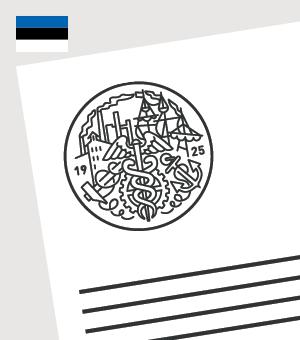According to Section 75 of the Employment Contracts Act (hereinafter referred to as the ECA), the employer may enter into a material liability agreement with the employee, under which the employee is responsible, regardless of fault, for safeguarding the property entrusted to them for the performance of their work duties. The employee is liable in cases where the property under their responsibility is destroyed, damaged, lost, or its value decreases, among other situations.
Why Should an Employer Enter into a Material Liability Agreement with an Employee?
A material liability agreement provides the employer with a safeguard to ensure that the property entrusted to the employee for work duties is preserved in the same condition as it was entrusted. The purpose of the agreement is to simplify the employer's burden of proof, particularly when the entrusted property involves cash or inventory with fluctuating quantities (e.g., warehouse stock), rather than shifting the risk of damage or loss of valuable equipment entirely onto the employee.
When Can a Material Liability Agreement Be Concluded?
The law does not specify the exact circumstances under which an employer may enter into a material liability agreement with an employee. However, the Supreme Court has clarified that an employer cannot primarily manage their property risks by entering into such agreements with employees. A material liability agreement is not a substitute for insurance, and employees cannot serve as insurers for the employer. For property that is reasonably insurable and commonly insured (e.g., a company vehicle), the employer must insure it.
Is the Employee's Fault Relevant?
If a material liability agreement has been concluded between the employer and the employee, the employee's fault is not relevant. Section 75 of the ECA creates an exception to the general rule in Section 72 of the ECA, which states that an employee is liable only if fault is proven. Therefore, when a material liability agreement is in place, there is no need to establish the employee’s fault, and the employee is responsible for safeguarding the employer's property regardless of fault.
In What Form Must the Agreement Be Concluded?
A material liability agreement is valid only if concluded in written form, as required under Section 75(2)(1) of the ECA. Written form means that the agreement must be signed manually by both parties or concluded electronically with digital signatures.
What Conditions Must the Agreement Contain?
According to Section 75(1)(2) of the ECA, a material liability agreement is valid only if it is reasonably limited in scope, time, and subject matter, and clearly understandable to the employee. The agreement must explicitly specify:
- The property covered
- Its location
- The period during which the employee is responsible
This provision protects the employee by preventing unreasonable or excessively burdensome agreements. For example, it would be unreasonable to hold the employee responsible for all warehouse inventory if they do not have control over all areas or items. The employee's liability must be proportionate to their duties.
Who Can Access the Property?
A material liability agreement is valid only if the property entrusted to the employee is accessible solely by the employee or a specific group of designated employees (Section 75(2)(3) of the ECA). This means that the employee can only be held liable for property that they alone or together with a defined group of employees control. Liability is excluded if access to the property is public or unrestricted.
What Is the Maximum Amount of Financial Liability?
The agreement is valid only if it specifies a financial liability limit (Section 75(2)(4) of the ECA). The agreement must clearly state a maximum monetary amount, which limits the employer’s right to claim damages.
- If the actual loss is less than the agreed limit, the employer can only claim the actual amount of the loss.
- If the loss exceeds the agreed limit, the employer cannot claim more than the limit under the material liability agreement.
However, the employer may still seek damages based on Section 74 of the ECA, which sets limits on employee liability for damages.
Is the Employer Required to Pay Compensation for the Agreement?
Yes. According to Section 75(2)(5) of the ECA, a material liability agreement is valid only if the employer pays the employee reasonable compensation for assuming the liability, considering the agreed liability limit. The reasonableness of the compensation must be assessed on a case-by-case basis, taking into account:
- The value of the property entrusted
- The likelihood of damage occurring (risk level)
- Industry practices regarding property insurance
- Whether the property is a fixed item (e.g., a company car) or a fluctuating asset (e.g., inventory or cash)
Reasonable compensation should be sufficient for the employee to realistically accumulate funds to cover potential liability over time.
Importantly:
- Compensation cannot be included in the employee’s base salary because it is not payment for work performed. It must be paid in addition to regular wages.
- The law allows flexibility in determining the payment terms for compensation, meaning the parties may agree on payment frequency (e.g., monthly, quarterly, or annually).








